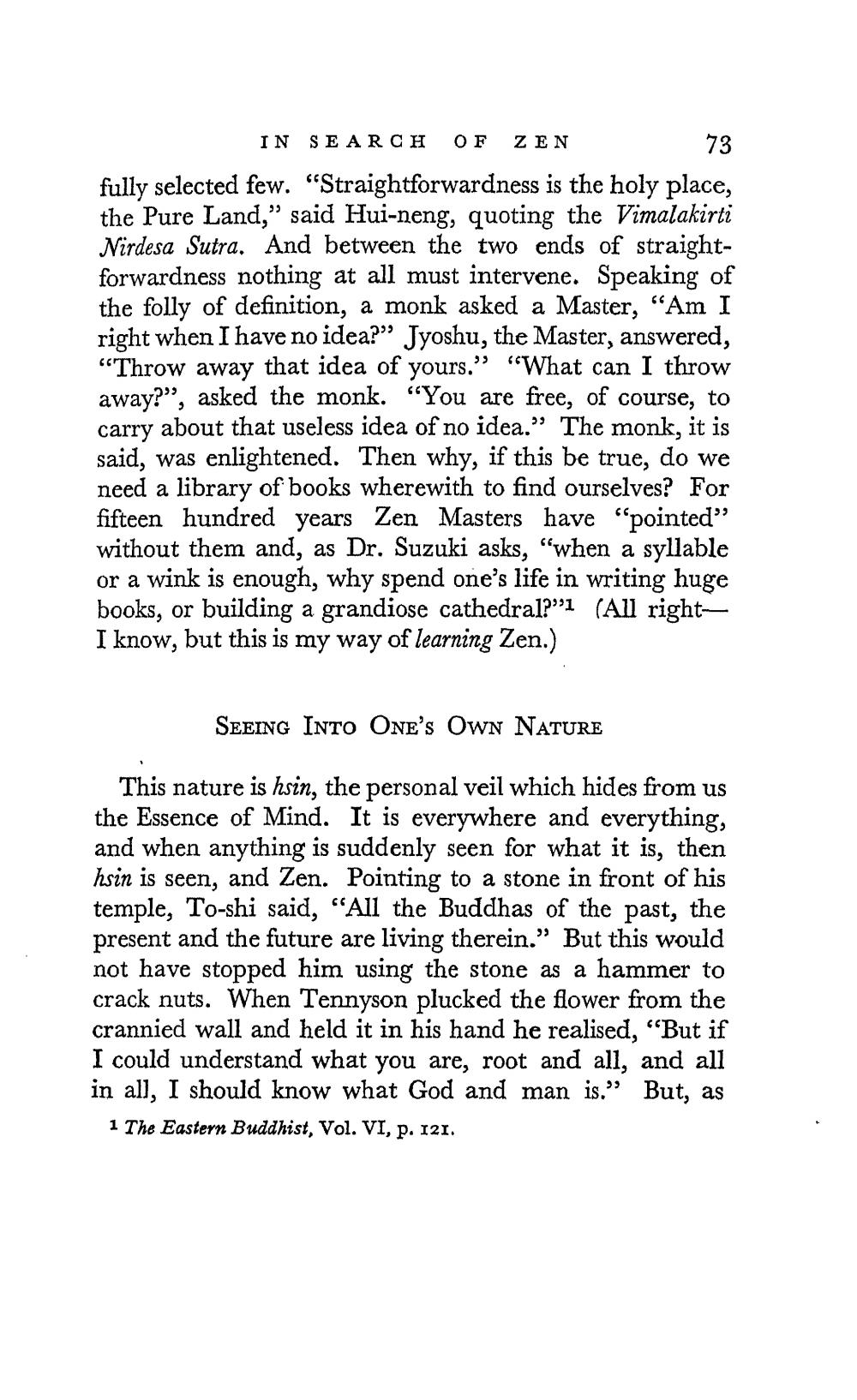________________
73
IN SEARCH OF ZEN fully selected few. "Straightforwardness is the holy place, the Pure Land,” said Hui-neng, quoting the Vimalakirti Nirdesa Sutra. And between the two ends of straightforwardness nothing at all must intervene. Speaking of the folly of definition, a monk asked a Master, "Am I right when I have no idea?” Jyoshu, the Master, answered, “Throw away that idea of yours." "What can I throw away?”, asked the monk. “You are free, of course, to carry about that useless idea of no idea.” The monk, it is said, was enlightened. Then why, if this be true, do we need a library of books wherewith to find ourselves? For fifteen hundred years Zen Masters have “pointed" without them and, as Dr. Suzuki asks, "when a syllable or a wink is enough, why spend one's life in writing huge books, or building a grandiose cathedral?”i (All rightI know, but this is my way of learning Zen.)
SEEING INTO ONE'S OWN NATURE
This nature is hsin, the personal veil which hides from us the Essence of Mind. It is everywhere and everything, and when anything is suddenly seen for what it is, then hsin is seen, and Zen. Pointing to a stone in front of his temple, To-shi said, “All the Buddhas of the past, the present and the future are living therein." But this would not have stopped him using the stone as a hammer to crack nuts. When Tennyson plucked the flower from the crannied wall and held it in his hand he realised, "But if I could understand what you are, root and all, and all in all, I should know what God and man is.” But, as 1 The Eastern Buddhist, Vol. VI, p. 121.




